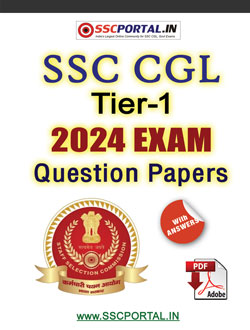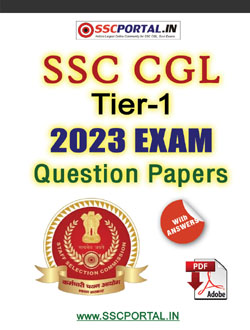Study Material for SSC CGL, CHSL, MTS, Prasar Bharti, FCI Exams : Indian History
Indian History
The Indian History is perhaps the oldest in the world, and the sources of Indian History are the verbal history, because our ancients never did bother about putting things down on paper and archaeological evidences. Based on the evidences available today, Indian History, like the history of every ancient culture in the world, is broadly divided into four periods as mentioned below:
Pre-History
From the big bang, the primeval swamp to the Indus Valley civilization. Though Indus Valley civilization is included in pre-historical period. However, technical evidences shows that Indus Valley civilization did have a script, although it has not been decoded yet. So, it is generally included in Ancient History nowadays.
Ancient History
It begins from the Indus Valley civilization (for which the date is a matter of hot debate, but historians have agreed to disagree on 3000 BC) to just after the king Harsha Vardhana, which is around 700-800 BC.
Medieval History
It begins from 800 BC to mid-18th century AD.
Modern History
From mid-18th century to the independence of India, which is on August 15,
1947. The history of Modern India is farther sub-divided into two major periods:
1. The British Period.
2. The India Freedom Struggle and Partition of India.
ANCIENT INDIA
The discovery of Mohenjodaro and Harappa by British archeologist: Marshall proved that Indian civilization is the oldest civilization in the world. Even India came before Greece, considered the oldest civilization before the discovery of Mohenjodaro and Harappa. The main features of Ancient Indian History are as follows:
Indus Valley Civilization
Discovery: In 1921, R.B. Dayaram Sahani, first discovered Harappa, in the Montgomery district of the Punjab. According to radio-carbon dating, it spread from the year 2350-1750.
Indus Valley Civilization
Dr. R. D. Banerjee found the ancient city Mohenjodaro (literally, ‘city of
the dead’) in Larkana district of Sindh, now in Pakistan in 1922.
The Marvelous Town Planning of Mohenjodaro: A chief feature of Mohenjodaro is
its superb town planning. The streets, which divided the city into neat
rectangular or square blocks, varied in width but always intersected each other
at right angles. The city had an elaborate drainage system, consisting of
horizontal and vertical drains, street drains and so on. The architecture of the
buildings was clearly intended to be functional and minimalist, and certainly
not to please the aesthete. Mohenjodaro was obviously a cosmopolitan city, with
people of different races mingling with the local populace-Proto-Austroloid,
Mediterranean, Alpine and Mongoloid.
The Vedic Period (1500 Bc-600 Bc)
Initially, they settled in the area of Sapt-Sindhu, which included Punjab, Kashmir, Sindh, Kabul and Gandhara (Kandhar). The chief sources of this period are The Vedas and the Epics, the Mahabharata and the Ramayana, which through their stories PO and hymns tell us about the expansion of the Aryans. The epic Ramayana is a symbolic tale which tells of the Aryan expansion to the south-the good, almost godly, aryaputra (an Aryan’s son) king Rama surging forth to finish off the evil Dasyu (that was what the Aryans called the natives) Ravana.
Aryans Political System
The King was the Supreme Power
No Rigidity in Caste System
Growth of Buddhism and Jainism
Buddhism and Jainism were instant hits with the populace and became powerful clannish minorities while the bulk of the people remained with Aryanism. Not for long, however. As the two new religions which had extremely charismatic leaders and very zealous followers caught the people’s imagination, the influence of both faiths spread enough for kings to profess and actively promote them.






